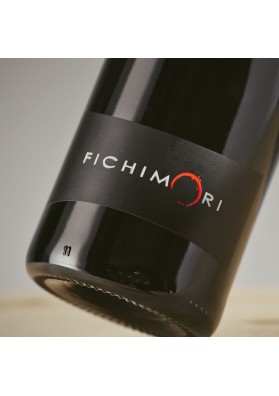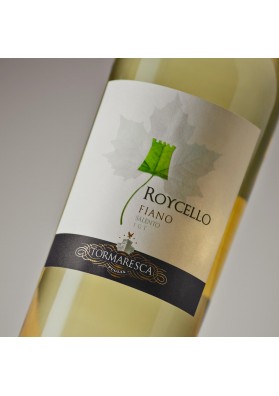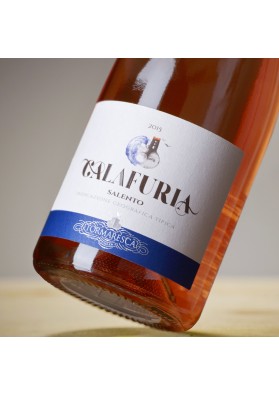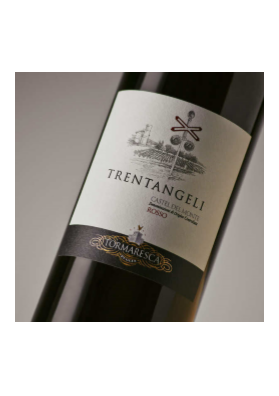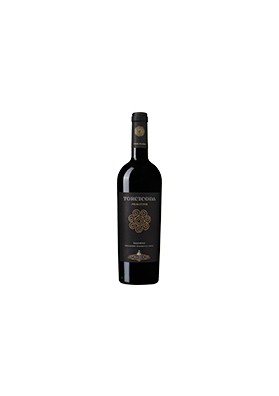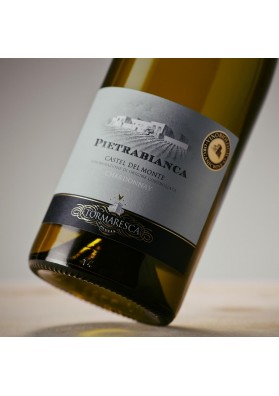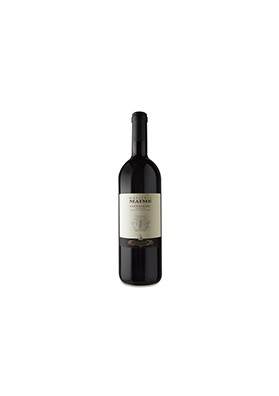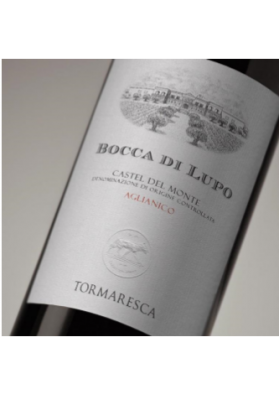Shopping Cart
- 0 item items (empty)
Named for the region's ancient seaside towers overlooking the Adriatic Sea, Tormaresca adds a fresh dimension to Italy's world-class wine landscape. Indeed, it is the only producer with vineyards in both of Puglia's elite winegrowing regions.
The Bocca di Lupo estate is located within the Castel del Monte DOC, while the Masseria Maìme estate is in the Salento area, the pulsing heart of this vibrant winemaking region. Tormaresca leads Puglia's modern renaissance by combining classic winemaking with the latest viticulture techniques to create exceptional wines just waiting to be discovered. All Tormaresca wines are crafted with 100% estate-grown fruit.
The Bocca di Lupo estate is located within the Castel del Monte DOC, while the Masseria Maìme estate is in the Salento area, the pulsing heart of this vibrant winemaking region. Tormaresca leads Puglia's modern renaissance by combining classic winemaking with the latest viticulture techniques to create exceptional wines just waiting to be discovered. All Tormaresca wines are crafted with 100% estate-grown fruit.
Bocca di Lupo occupies 250 acres of chalky soil at an elevation of 800 feet above sea level in Murgia, near the volcano Vulture. Blessed with abundant sunshine and warm temperatures, the vineyard's Chardonnay, Aglianico, Fiano, Moscato, and Cabernet Sauvignon grapes flourish, producing wines with fresh, vibrant, and elegant flavors.
Masseria Maìme estate's 625 acres extend over half a mile along the Adriatic coast, providing an ideal growing environment for Negroamaro, Primitivo, Cabernet Sauvignon, Chardonnay, and Fiano. Together, these estates enable Tormaresca to cultivate both exceptional native and international varietals in the heart of Puglia.
br/> We began working in the Apulia region in 1998 under Tormaresca label in the region’s Murgia and Alto Salento areas. This was another case – maybe even the best example – of redeeming marvelous terroir. Wine has been made on the plateaus of the “heel” of the italian boot since the time of the ancient Greeks. Until just a few years ago, this region was the largest producer of wine grapes in the entire country. However, most of the grapes were exported. As soon as they were cut from the vines, they were sent elsewhere in Italy and around the world, where they were used to make table wine.
Indeed Apulia, which sits between the Adriatic and the Ionian – has long been known for quantity, not quality. That’s been changing recently, and local terroir is now experiencing a true renaissance. Apulia is crisscrossed by wine routes, and modern wineries are popping up all over the region. Wines like Primitivo, Negroamaro, Fiano and Aglianico are once again being recognized. There are twenty-five DOC in Apulia today. We hope to make our contribution to this fruitful and fertile movement.
A vacation-cum-exploration trip to this southern frontier opened our eyes to its potential. In the mid-1990s, I traveled there, Cotarella by my side, as always. It was immediately clear to us that though this region had a proud history and ancient grapes that dated back to the days of the Magna Grecia, it had yet to blossom fully in enological terms. In many other places, Antinori has arrived and started out selecting and reworking the grapevines and grooming the land. In Apulia, we found the inverse situation: wonderful grapes growing on perfect land, but an almost complete lack of modern facilities designed to produce high-quality wine.
Cantina di Masseria Maime has been in business since 2009. It’s very modern and was conceived based on Renzo Cotarella’s latest winemaking theories. It sits amid fields, woods, and centuries-old olive groves. We’ve worked on marketing too, with innovations like Fichimori, a red wine meant to be served cold. We also make an extra-virgin olive oil from Cellina and Coratina olives, both native to Apulia.”
Masseria Maìme estate's 625 acres extend over half a mile along the Adriatic coast, providing an ideal growing environment for Negroamaro, Primitivo, Cabernet Sauvignon, Chardonnay, and Fiano. Together, these estates enable Tormaresca to cultivate both exceptional native and international varietals in the heart of Puglia.
br/> We began working in the Apulia region in 1998 under Tormaresca label in the region’s Murgia and Alto Salento areas. This was another case – maybe even the best example – of redeeming marvelous terroir. Wine has been made on the plateaus of the “heel” of the italian boot since the time of the ancient Greeks. Until just a few years ago, this region was the largest producer of wine grapes in the entire country. However, most of the grapes were exported. As soon as they were cut from the vines, they were sent elsewhere in Italy and around the world, where they were used to make table wine.
Indeed Apulia, which sits between the Adriatic and the Ionian – has long been known for quantity, not quality. That’s been changing recently, and local terroir is now experiencing a true renaissance. Apulia is crisscrossed by wine routes, and modern wineries are popping up all over the region. Wines like Primitivo, Negroamaro, Fiano and Aglianico are once again being recognized. There are twenty-five DOC in Apulia today. We hope to make our contribution to this fruitful and fertile movement.
A vacation-cum-exploration trip to this southern frontier opened our eyes to its potential. In the mid-1990s, I traveled there, Cotarella by my side, as always. It was immediately clear to us that though this region had a proud history and ancient grapes that dated back to the days of the Magna Grecia, it had yet to blossom fully in enological terms. In many other places, Antinori has arrived and started out selecting and reworking the grapevines and grooming the land. In Apulia, we found the inverse situation: wonderful grapes growing on perfect land, but an almost complete lack of modern facilities designed to produce high-quality wine.
Cantina di Masseria Maime has been in business since 2009. It’s very modern and was conceived based on Renzo Cotarella’s latest winemaking theories. It sits amid fields, woods, and centuries-old olive groves. We’ve worked on marketing too, with innovations like Fichimori, a red wine meant to be served cold. We also make an extra-virgin olive oil from Cellina and Coratina olives, both native to Apulia.”
Showing 1 - 8 of 8 items














































